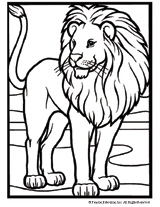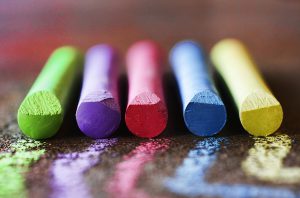
Record All of Your Findings

Record All of Your Findings
Before you begin, make sure you have all you need to record your findings. Some helpful worksheets include:
- Research Calendar
- Correspondence Log
- Pedigree Chart
- Family Group Sheet
- Genealogy Research Form
Don’t Just Look for Documents

Don’t Just Look for Documents
Anything can contain information that reveals something about your family, past or present. It might be a document with information about a long-lost relative, or it can be a ragged old sweater, or a piece of woodwork created by an ancestor. It might even be a memory or a story, funny or scary or wonderful, about someone in your family. Anything that mattered to one of your relatives is worth seeking out and studying for clues about an ancestor.
Look for Books
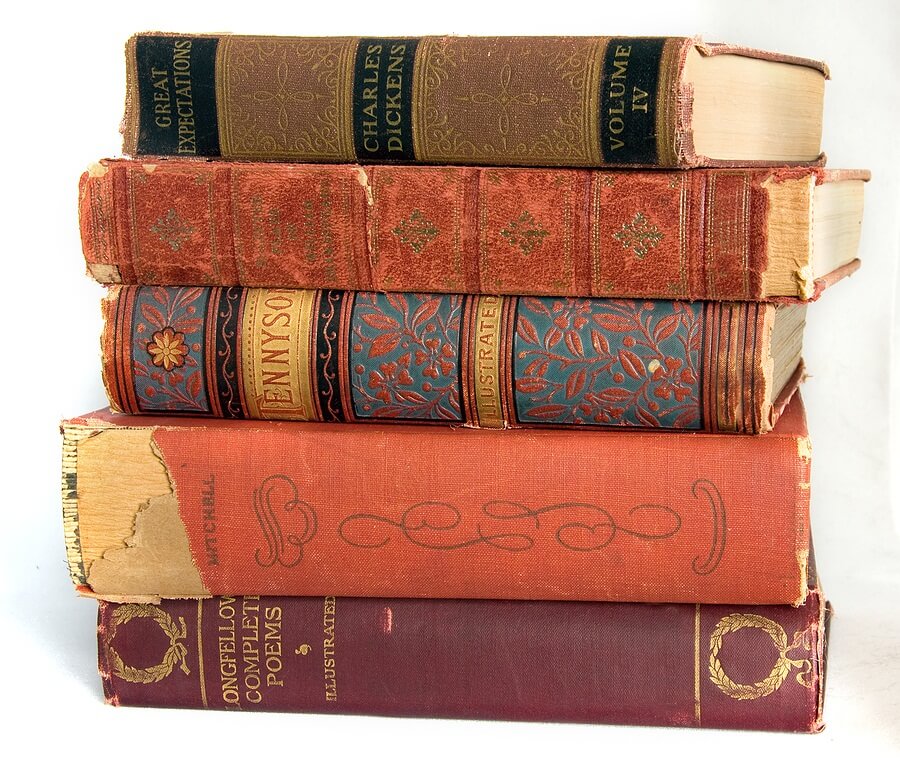
Look for Books
Information about your family is lurking in all kinds of places: family bibles, baby books, photo albums, old papers and documents, citizenship papers, school records. Ask your parents and other relatives if they have any of these, and if you can look through them.
Handle with Care
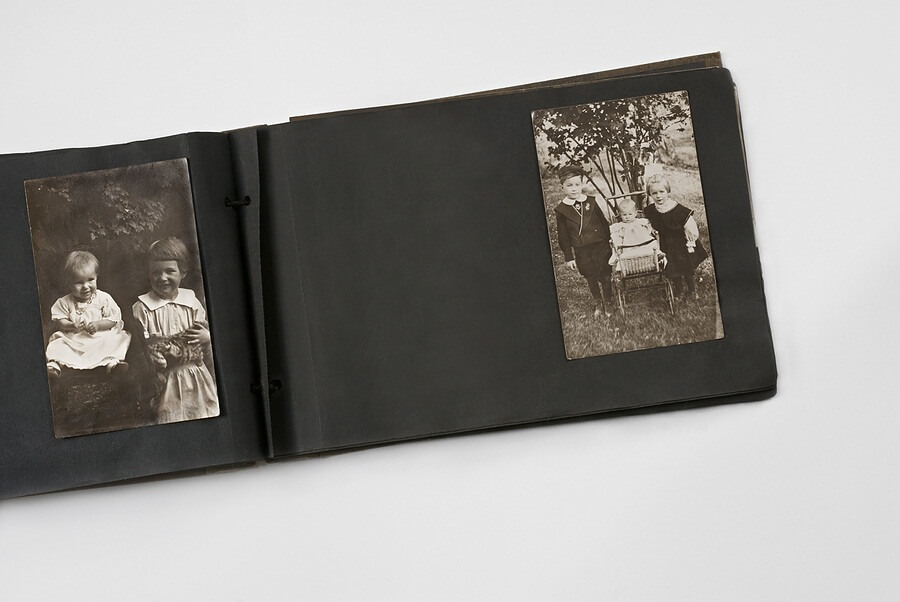
Handle with Care
When you come across an old book or photograph, be gentle. Many of these “treasures” may be old and in very fragile condition. When handling old pictures and books remember:
- Only touch old photographs on the edges.
- Handle old books very gently; their pages may crack or the spines may break if you are too rough with them.
Look on the Front Inside Cover

Look on the Front Inside Cover
Check the back of books, too. There may be an inscription or notes made by the previous owners.
If the owners of these things are nervous about your examination, suggest that they turn the pages or handle the items while you just look. Write down any significant dates you find, noting where you found the information.
Bibles Might Reveal Special Dates
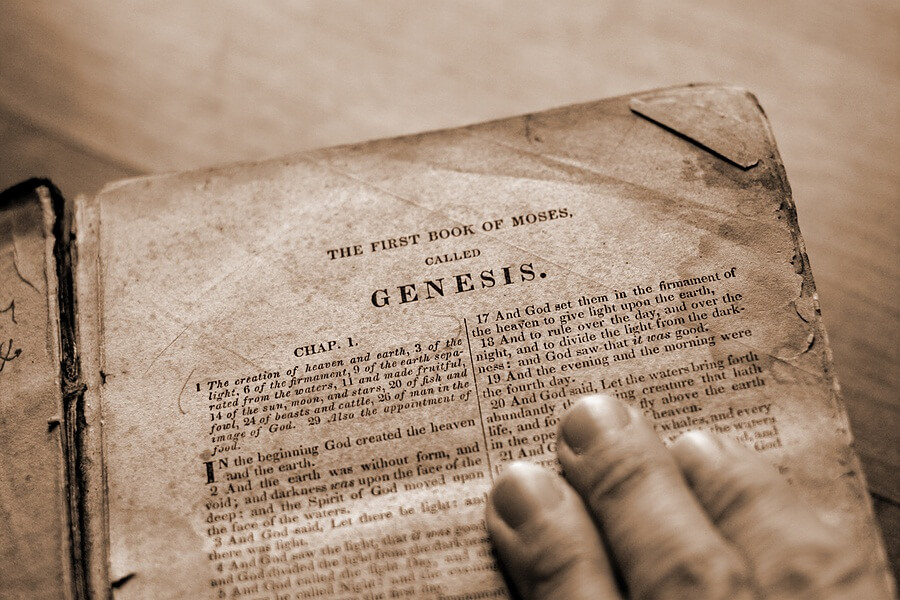
Bibles Might Reveal Special Dates
If you find an old family bible, inspect the inside front and back covers, and the exact middle of the book. Years ago, bibles were often used to record the dates of family births, marriages, and deaths.
Check Paper Trails
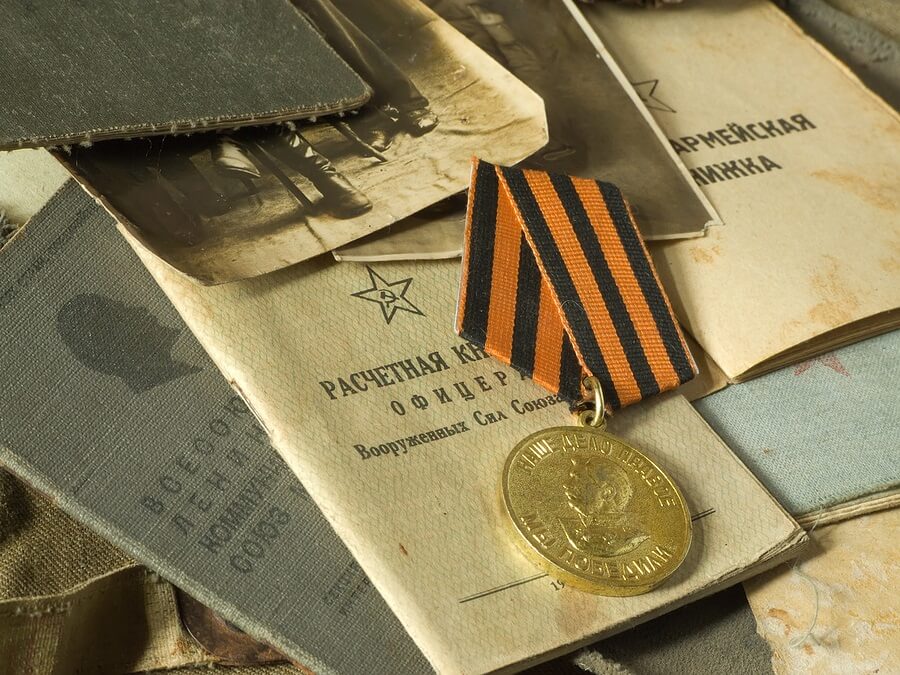
Check Paper Trails
Government-issued documents or forms of ID can reveal a lot. Citizenship papers, passports, old drivers’ licenses, and school records often include a person’s date and place of birth. They may also list the names of both parents (including the hard-to-find grandmother’s maiden name).
Look Closely at Family Pictures
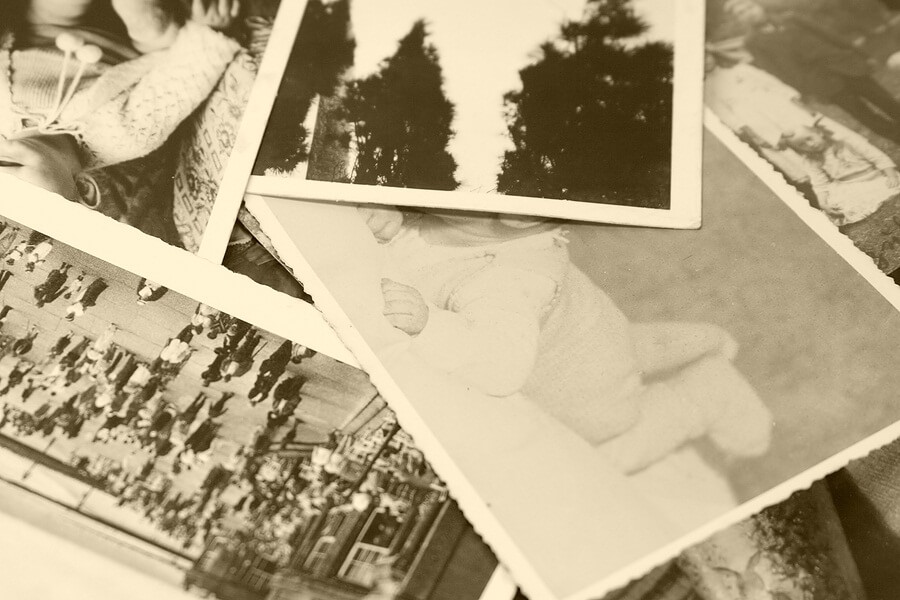
Look Closely at Family Pictures
Family photo albums can be wonderful resources, so ask your relatives to talk about the people in the pictures. You may hear stories about the circumstances under which a photo was taken, or about the people in the picture. Just seeing photos of ancestors sometimes jogs peoples’ memories, and may bring to mind a long-lost name.
Clothing Speaks Volumes

Clothing Speaks Volumes
After they’ve identified who’s who, you may want to ask them about the way people are dressed.
Before about 1920, taking pictures was considered a great occasion and people often wore their best outfits. How someone is dressed can speak volumes. What were your ancestors wearing? Are they serious or lively, worn or new, dressy or everyday?
Photographer’s Name and Location
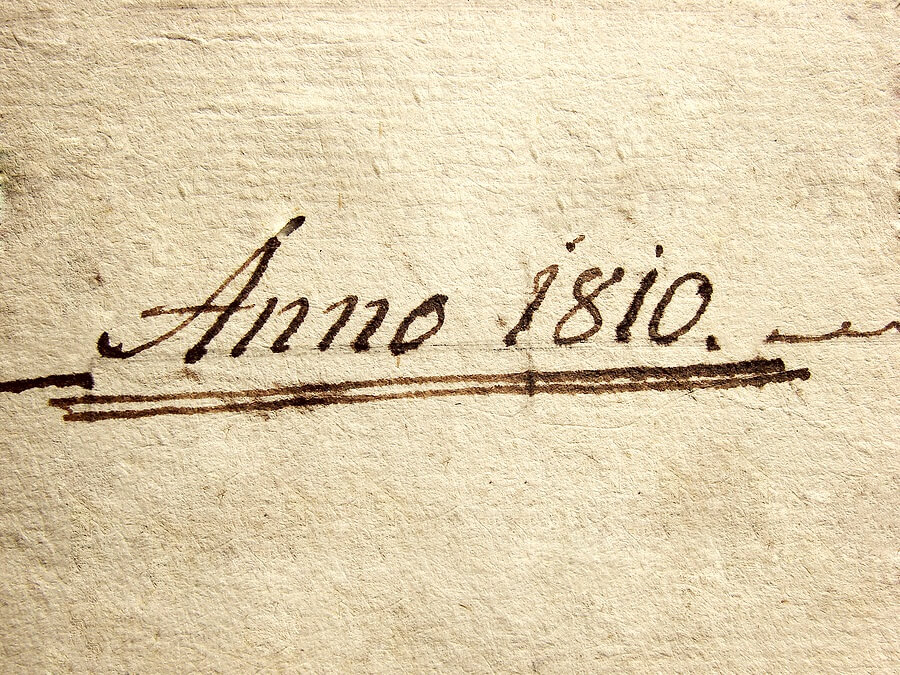
Photographer’s Name and Location
Check to see if the name of the photographer’s studio, its location, or a date is on the back. Was the photograph taken near where your family lived, or was the studio far away?
Is Everyone Related?

Is Everyone Related?
If there is more than one person in the photograph, are the people related? Is everyone dressed the same way? Are their hairstyles the same? Are the women wearing head scarves and aprons and are the men wearing hats? If so, are they in the style of America or the Old Country?
Heirlooms
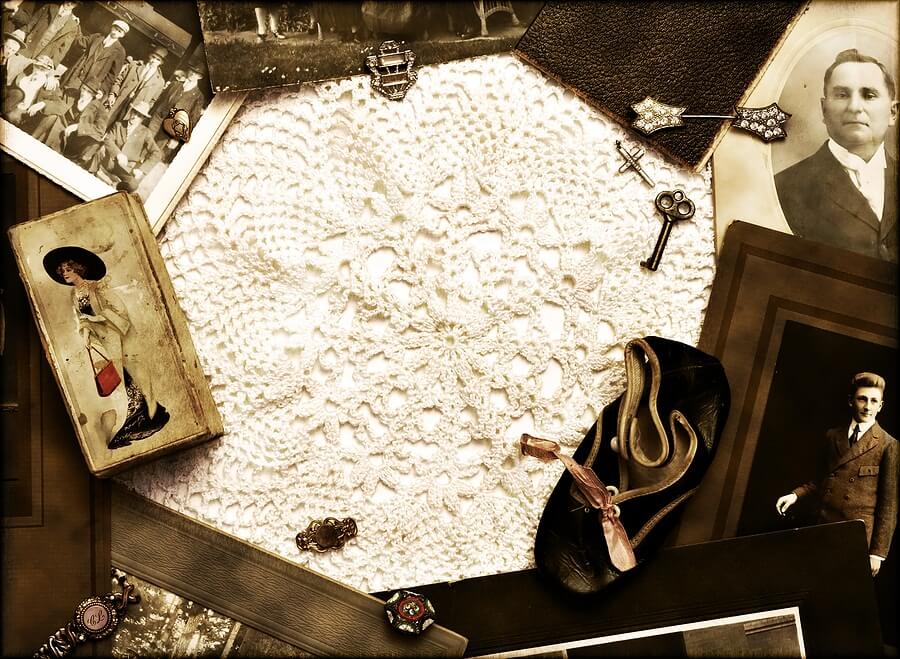
Heirlooms
Heirlooms are special mainly because of their history, and they are highly valued simply because they are beautiful or because they played a part in a family’s past. Often times they are handed down through several generations, from father or mother to son or daughter.
Quilts and Samplers

Quilts and Samplers
Old samplers (decorative pictures sewn onto cloth) or quilts that have been in the family for a long time may have names and dates of birth embroidered onto them.
Furniture and Paintings
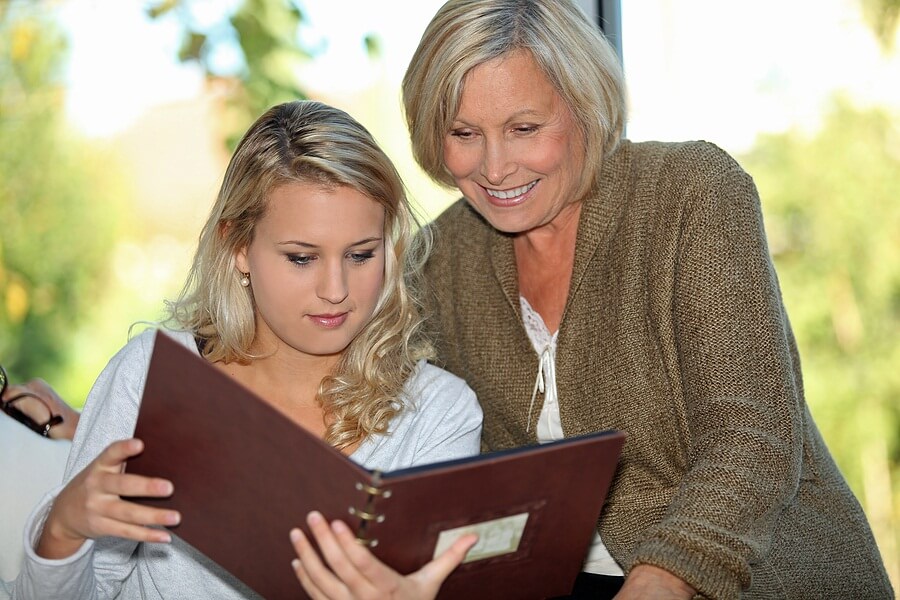
Furniture and Paintings
Although clothing and quilts are the most obvious, items such as furniture and paintings can hold clues as well.
Gently look underneath and behind pieces of furniture. Ask if you can look at the backs of paintings. Sometimes you may find notes or inscriptions on these, too.
You may find hundreds of other fascinating items in family collections: Crocheted tablecloths or handmade dolls, a hat with a funny history, a portrait of a parent left behind in another country, a book brought across the sea by a young woman who loved to read. The possibilities are endless! Be sure to enter in your notebook any information you find.
Relatives’ Memories/Oral Histories
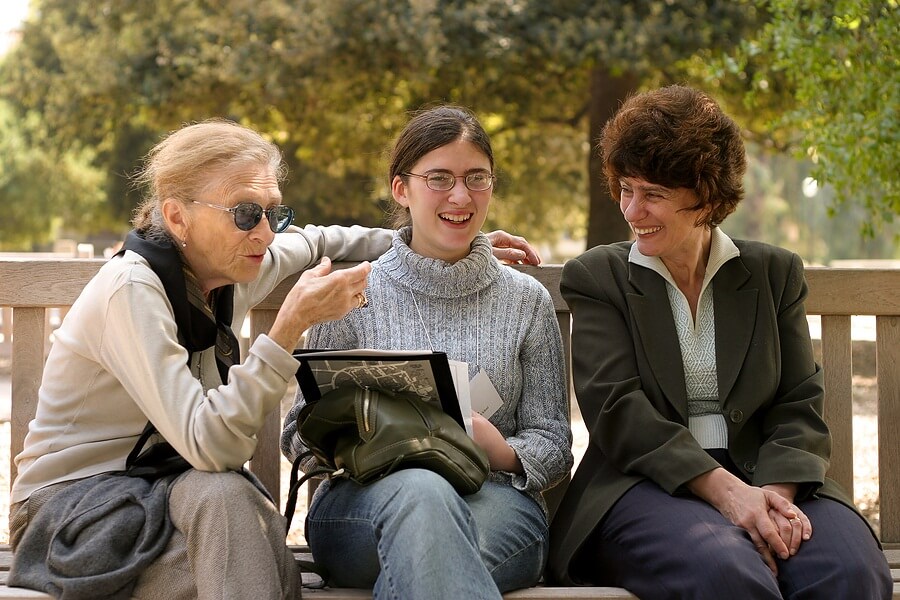
Relatives’ Memories/Oral Histories
Nothing can capture the essence of your family the way your grandparents and other relatives can. They have lived through some great events, and can recall them for you first-hand. They may remember the smallest details of significant family moments that aren’t recorded anywhere else. And these stories can bring ancestors to life.
Begin by interviewing your mom or dad, then move on to other relatives you know well. When you feel like you are an experienced interviewer, you’ll want to talk with your oldest relatives. They know the most about the earliest days of your family. They are, in fact, a precious link to the past. Someone born in 1920 can not only give you clear memories of the 1930s, but he or she may have heard firsthand tales of the 1880s from someone who was 70 years old in 1930. You may connect 100 years in one conversation!
Long Distance Interviews
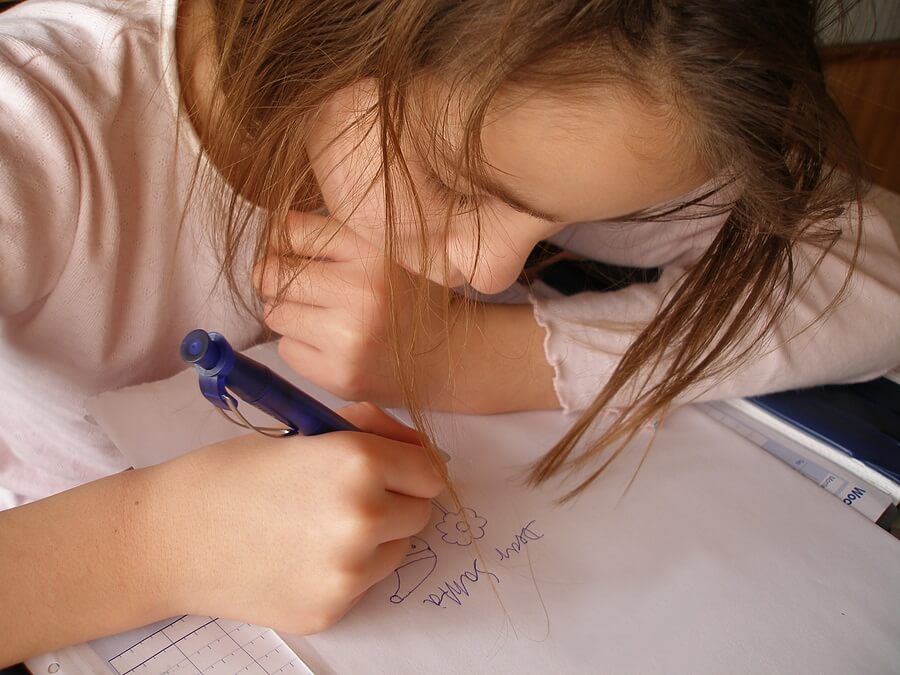
Long Distance Interviews
You won’t always be able to sit down with your subjects. Some of them may live far away from you. In those cases, your interviews can take place over the telephone or by letter-questionnaire.
However you do it, conducting a successful oral history interview isn’t always easy. Some of it depends on your relatives: What they know, what they are willing to talk about, and how much they remember.
But with a little effort, you can piece together a fascinating story about your family and ancestors.
Find more information and resources on Your Family’s History.




















